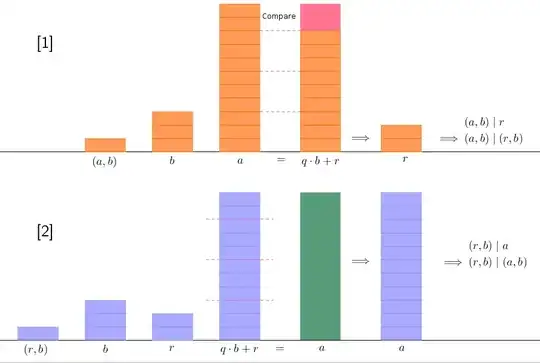Origin - Elementary Number Theory, Jones, p $5$, Lemma $1.5$
Are there any illustrations? I tried Wikipedia's article and the first picture to the right, but I think this delineates Euclid's Algorithm? I'm not querying about proofs.
Origin - Elementary Number Theory, Jones, p $5$, Lemma $1.5$
Are there any illustrations? I tried Wikipedia's article and the first picture to the right, but I think this delineates Euclid's Algorithm? I'm not querying about proofs.
This is how I visualized it:

where $(x, y)$ denotes $\text{gcd}(x, y)$.
Explanation:
Arithmetic of blocks:
An integer $x$ is represented by a rectangular block of unit width and height $x$. Arithmetic operations between integers can then be visualized as manipulation of their blocks.
Main idea in the diagram:
Use blocks of height $(x, y)$ to argue about divisibility.
Representation:
By definition, $x = (x, y) \cdot k_1 \text{ and } y = (x, y) \cdot k_2 \text{ where } k_1, k_2$ are integers. So, $x$ and $y$ can be drawn as a stack of some integral number of blocks each of height $(x, y)$.
Part 1:
Part 2:
Implication:
I leave it for the reader to conclude that $x | y \text{ and } y | x \implies x = y$. That is, $(a, b) = (r, b) \blacksquare$
Note:
I chose positive integers in the diagram, but one could imagine negative integers as blocks below the horizontal line, representing negative height. But this would clutter the illustration.